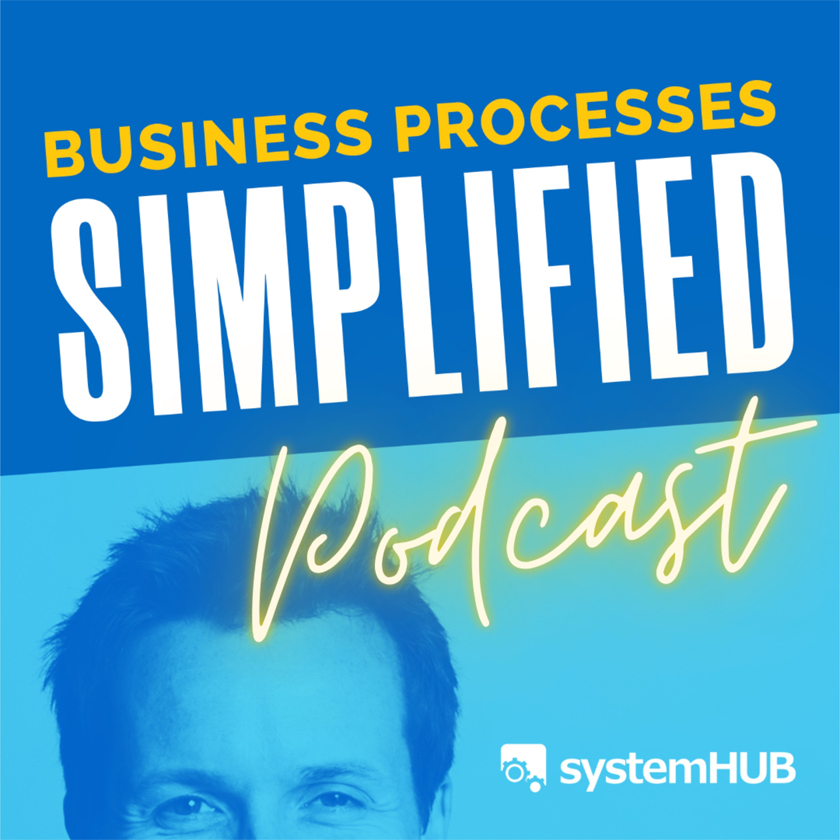Your team just caught another order entry mistake. The customer’s fuming. Someone has to redo the work. Again.
You’ve hired good people. You’ve invested in tools. But the same problems keep surfacing.
Here’s why: you’re treating symptoms, not fixing root causes in your processes.
Lean Six Sigma principles offer a practical way to stop the bleeding. Ron Crabtree, co-author of four books on process improvement and former subject matter expert at multiple universities, has spent decades applying these methodologies in small businesses. His philosophy? “If you can’t build a burning platform for change, don’t even approach it.”
Here’s how his methodology works.
What Lean Six Sigma Actually Means
Ron’s been in this game since the 1980s. He watched both methodologies evolve and still finds it mystifying that people pick sides.
“I’ve always been a little mystified by the folks that say there’s a Six Sigma camp or a lean camp,” he explains. “To me, it’s always a major big toolkit.”
Lean Six Sigma principles combine the best of both. Lean cuts waste and speeds up processes. Six Sigma reduces errors and variation. Together, they create a business that runs faster, cleaner, and cheaper. The toolkit includes over 100 techniques: from Kaizen workshops to value stream mapping.
You don’t need to master all 100. You need the right tool for your specific problem.
Step One: Build Your Burning Platform
Ron is blunt: “If there is no significant reason for doing this, don’t even approach it because it is hard work.”
You need a case for change that everyone can feel. Ron shares a story about a tech support company with 140 agents. Their biggest customer threatened to cancel unless they cut response time in half and reduced prices by 10%. “Half of your employees are going to lose their jobs if we lose that customer. That’s a real burning platform.”
Without urgency, people resist. Your first job? Articulate why this matters to everyone, not just the owners who’ll make more money.
Step Two: Get the Right Voices in the Room
Lean Six Sigma principles only work when you involve people who actually do the work.
“We want people who do the sales, people who take the orders, people who consume the outputs,” Ron explains. This cross-functional approach reveals problems hiding in departmental handoffs.
You need three voices at the table:
- Voice of the Customer: What do they value and pay for?
- Voice of the Business: What does the company need to survive?
- Voice of the Process: What’s really happening on the ground?
Ron emphasizes: “We always should be doing things focused on the voice of the customer. If nobody wants to pay for this, then why are we doing it?”
Step Three: Run the “Stop the Crazy” Workshop
Grab a flip chart. “Let’s talk about the things that make us crazy about the order entry process,” Ron suggests. Get everyone to voice their frustrations.
Capture 25 or 30 pain points. Then ask two questions for each:
- How often does this happen?
- What does it cost us each time?
Do the math. Pareto’s 80/20 rule reveals that a handful of problems cause most of your pain. “If we can solve those five or six big ones, we’d make a big dent,” Ron says.
This exercise creates buy-in. Your team measured the problem. Now they’re invested in fixing it.
Step Four: Find the Root Cause
Ron loves the Hawthorne Effect story from the 1920s. Researchers increased factory lighting and productivity went up. They increased it again; productivity went up again. Then they turned the lights back down.
Productivity increased again.
“The big aha was: the fact that we were paying attention made the real difference,” Ron explains. “That’s one of the real magic aspects of properly applying lean and Six Sigma.”
But attention alone isn’t enough. Use the Five Whys technique to get past symptoms to the real problem. Then apply value-add analysis: Does the customer care about this step? Would they pay for it?
Ron’s blunt: “Your customer may argue, I want you to get it right the first time. I don’t want to pay for somebody to look at this three times before it’s shipped.”
Step Five: Standardize What Works, Then Improve It
Once you’ve fixed the process, document it. In the tech support story, Ron’s team discovered one agent had a clever search routine for finding solutions quickly. “All the other agents didn’t know that, so we codified that and made it part of the process.”
They revamped onboarding, teaching password resets in three days instead of all 36 call types over four weeks. Results? Average handle time dropped 30%. They saved 140 jobs. Customer satisfaction went up.
But standardization isn’t the end; it’s the beginning of continuous improvement. “You can’t do Kaizen just once or twice,” Ron says. “You have to be in it for the long haul.”


The Three Things You Must Keep in Balance
Ron returns to this mantra: people, process, and technology. “Everything affects everything else. You’ve got to keep all three elements in mind.”
Technology alone won’t save you. “Eight out of 10 digital transformation initiatives don’t get the results they could or should. And that really comes back to people.”
Why? Because people resist what they don’t understand. This is where culture matters. “Culture will happen,” Ron says. “Our choice as leaders is: do you want to define it, or just allow it to happen?”
Your First Lean Six Sigma Project
Don’t try to fix everything. Pick one high-impact problem. Use the waste workshop framework: gather your team, list what makes you crazy, quantify frequency and impact, focus on the vital few, do root cause analysis, then implement and measure.
“Any organization with more than a handful of people and problems, if there’s pressure to improve, they are candidates,” Ron says. Even small shops can benefit. Start small, prove it works, then expand.
One improvement a day is 260 improvements a year.
Stop Firefighting, Start Systemizing
Ready to stop firefighting and start fixing? Lean Six Sigma principles aren’t just for Fortune 500 companies. They work for businesses like yours, if you’re willing to look at your processes honestly, involve your people, and commit to the work.
Because here’s what Ron knows after decades in the trenches: the businesses that document their systems, measure their results, and continuously improve don’t just survive. They scale without the chaos. They create freedom for their owners. They turn into well-oiled machines that run whether you’re there or not.
And isn’t that why you started this business in the first place?








